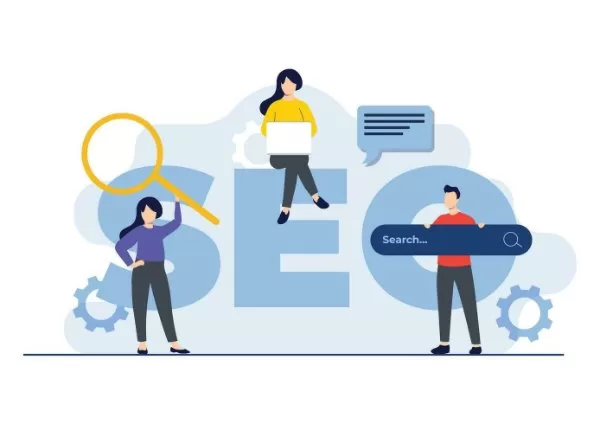Insights
LLM Seeding: Stay Visible in an AI-Driven Landscape
On Digitals
28/07/2025
25
LLM Seeding is quietly changing the game and now might be the perfect time to jump in. LLM seeding as planting your brand in spots where AI tools like ChatGPT, Claude, Perplexity and their other counterparts look for answers. You write content that’s easy to scan (FAQs, tables, clear headings), publish it in crawl‑friendly places, and let AI Overviews pick it up. Nowadays, it’s how your name becomes part of the answer, not just the next search result.
Why Is Traditional SEO Not Quite Enough for AI‑Driven Discovery?
If you’re still relying on classic SEO tactics, you might be noticing something odd: traffic is slipping even though your content seems fine. That’s because AI-driven results like ChatGPT or Google’s AI Overviews are answering user questions without sending people to your site, even though they do cite you as a source, but only when they use your content. In fact, about 60% of searches now end in zero-clicks, and a lot of those are powered by LLMs pulling content directly.
Meanwhile, many publishers saw search referrals drop by 20–40%, and click-through rates plunge to as low as 2–3% when AI summaries appear at the top. What do LLMs care about? Your rankings are one thing, but they’re also drawn to clear structure, context, and concise formatting that they can cite cleanly, even when that result is not at the tippy top. That’s where LLM seeding comes in, shifting the approach from chasing clicks to earning AI-driven mentions.

LLM seeding is changing the game
What Is LLM Seeding?
What Does LLM Seeding Mean?
LLM seeding means publishing content in formats and on platforms where AI models like ChatGPT, Claude, and Perplexity are most likely to scrape, understand, and cite. You’re not writing just for Google rankings, you’re shaping what AI actually wants when answering questions from its users.
How It Builds Brand Visibility Without Links or Clicks
When an AI model answers a user, it pulls from content that is clean, informative and well‑formatted. When it does so, it usually mentions your brand and even cites the source, which boosts brand recall and trust.
As users are developing a habit to always double check AI-generated information, they will likely access your page to read more and fact check the content that they need. This essentially overrides the SERPs and top-ranked results because technically, the users did not even search on Google.
Benefits in 2025 and Beyond
- Brand exposure without relying on traffic: your name appears inside AI-generated answers, even for users who never visit your site, which may incentivize them to do so.
- Instant authority by association: Being cited alongside industry leaders gives credibility, regardless of your Google ranking.
- Visibility gains shown by tools like Semrush: Early adopters report increased brand mentions and visibility inside AI platforms, beyond conventional search metrics.

LLM seeding is a new concept for SEO
What to Publish for LLM Seeding Success?
While LLM seeding does require you to change your approach to web content creation, keep in mind that these other content elements should be added into your strategy, not replacing your existing formats.
That said, these are the content formats you need to have for LLM seeding:
FAQ‑Style Content
LLMs are trained on question-and-answer data so FAQ pages are a perfect match. Use natural‑language questions as subheadings, with clear 2–3 sentence answers, then expand briefly. That structure makes your brand easily extractable as an authority. It’s the kind of content AI tools love to quote directly.
If you need evidence, that is exactly how the “People Also Ask” section was made on the SERPs, something that has been around for some time. It simply compiles the common questions related to the query that users may have and presents them in a succinct way. So the main idea here is to be one step ahead and incorporate said questions into your content in the beginning.
Comparison Tables, Lists, and TL;DRs
Think quick-reference formats, like “Tool A vs. Tool B” comparison tables, “Top 5” lists, or TL;DR summary boxes. These are highly scannable and auditable by AI systems when crafting responses. Simple, labeled lists make it easier for AI to pull and paraphrase accurately.
Why is this the case? Simple, because these formats are made for easy reading for users, something that AI tools strive to achieve.
Opinion‑Led, Data‑Rich, Transparent Case Studies
When you share first-person insights, backed by original data or methodology or provide honest pros and cons, LLMs will favor you because you provide something new and grounded. When you reveal survey results, outcomes, or test metrics, AI tools can cite you with confidence, but always be sure to have evidence to back up your claim. The idea is not to be different, it’s to be personal but still rooted in truth.
Structured, Semantic Formatting
How you format content matters just as much as what you say. Use markdown‑style headers, chunked lists, schema markup (FAQPage, HowTo), and clean HTML. This makes it easier for AI models to parse your content and lift relevant snippets in a technical sense.

Best content types to be discovered by LLMs
Where to Seed Content for Maximum LLM Pickup
AI‑Friendly Publishing Platforms
Publish your content on easily scannable, crawlable platforms because these sites use semantic formatting with clean headings, paragraph structures, minimal fluff that AI tools can digest with ease.
For example, articles published on LinkedIn carry the added benefit of verified author profiles, while Medium and Substack projects are often associated with substantive, in‑depth content. The combination of clarity, credibility, and structure helps LLMs find and trust your content.
High‑Authority Guest Posts and Industry Sites
Getting your insights featured on respected industry blogs or media outlets boosts your chances of being cited by AI. When LLMs see structured, expert-driven content on domains they already trust, they’re more likely to quote it, even if it’s not on your own website. These platforms help build your brand authority in AI models’ eyes.
Community Q&A Platforms and Forums
AI models frequently draw on real-world dialogue from places like Reddit and Quora. Reddit currently ranks among the most‑cited sources in AI-generated responses, while Quora’s conversational Q&A format also serves as a rich training ground for LLMs. Participating in well-structured, helpful community threads, where your brand is mentioned naturally, helps you become part of the collective knowledge these models rely on.

Where do you post content for LLM seeding?
Step‑by‑Step LLM Seeding Strategy
Step 1: Identify Real Customer Questions and Prompts
Begin by surfacing the actual questions people ask. Dive into support tickets, explore Google’s “People Also Ask,” browse relevant Reddit threads, and check out tools like AnswerThePublic.
You can even go further and tap into ChatGPT or similar LLM tools to know more about prompt engineering. This gives you a treasure trove of real-world language, exact phrasing, pain points, and context, you can use to craft content that matches those queries directly.
Step 2 – Create Structured, Citation‑Ready Content
Once you’ve gathered those questions, produce content that LLMs can easily quote while making sure language is clear, phrasing is natural, and author credibility (like named experts or data) is visible. LLMs favor well-labeled, transparent content they can lift directly. Same as a traditional strategy, employ a content calendar to keep track of things that you publish and how they perform.
Step 3 – Publish Across Platforms Thoughtfully
Don’t stop at your blog. Share your content on social media platforms and forums, post guest contributions to trusted industry sites, and even answer community questions on Reddit or Quora using similar structured snippets. Distributing broadly across platforms where AI models commonly crawl gives redundancy and increases your chance of citation.
Step 4 – Use Schema Markup and Semantic Structure
Formatting matters when AI tools choose the information source to site from because they go through an unfathomable amount of information in a short period of time. Write FAQs with FAQPage schema, structure step-by-step guides with HowTo markup, use natural HTML headings and chunked lists. This makes content easier for LLMs to go through your content, improving the likelihood that the AI will extract and cite your text cleanly.
Step 5 – Track Visibility, Test Prompts, Iterate
You’ll want to monitor whether your efforts are working. Tools like Semrush’s AI Toolkit can track AI visibility across ChatGPT, Gemini, Perplexity, and more, showing brand mentions, sentiment, and share-of-voice comparisons.
Complement that with manual tests: ask those real questions in ChatGPT or Perplexity and see whether your brand shows up. Tally mentions in a spreadsheet, reviews periodically, and refine content or platforms based on what the data reveals.

Key strategies for LLM seeding
Advanced Tactics to Amplify LLM Seeding
AI Mirror Audits
Conducting an AI mirror audit lets you test how different LLMs like ChatGPT, Gemini, and Perplexity currently mention your brand. Try neutral queries like “What are the top tools in [your category]?” or “Who are the main competitors in [your industry]?” This exposes gaps where your brand should appear but doesn’t. After auditing, you know exactly where to focus your content and seeding efforts.
Synthetic Prompt Library
Build a library of realistic user questions by generating hundreds of natural‑language prompts related to your product, industry, or pain points. Use tools like GPT‑4 to simulate how customers search. Then, create structured, answer‑ready content for each prompt and seed it across platforms. It’s like planting hundreds of opportunities for AI to pick up your name.
Co‑Citation Engineering
Intentionally place your brand name alongside known leaders in your field. When LLMs repeatedly see your brand mentioned alongside authoritative names, they learn to treat yours as part of the credible set. It’s a powerful way to sneak into AI’s selection pool.
Peer Amplification via Third‑Party Mentions
Ask affiliates, industry influencers, satisfied customers, or partners to include your brand in their content, the same way you would get backlinks. You can even provide small prompt templates or answer snippets they can reuse. When AI crawls independent sources that echo your brand, it reinforces trust and visibility across multiple signals, not just your own site.
FAQs about LLM Seeding
What does “LLM” stand for and why is it important?
LLM stands for Large Language Model, which refers to powerful AI systems like ChatGPT, Gemini, and Claude. These models process vast amounts of web content to generate answers. With LLM seeding, brands strategically publish content in formats and places that these models crawl and reference, helping your name show up when AI generates answers.
Is LLM seeding a replacement for traditional SEO?
Not at all. Traditional SEO still drives website traffic and helps you rank in search engines. Whereas LLM seeding focuses on earning brand mentions and recall in AI-generated responses. Together, they form a modern, multi-channel visibility strategy that works whether users click through or stay within the AI experience. Aside from that, AI has only changed the process of discovery so far, traditional SEO will still help you retain users on your site.
Can AI cite my brand without using a link?
Yes and very often will. Many AI-generated answers include brand mentions without links, and research shows that unlinked mentions can be powerful visibility signals. It’s the brand name and context, not the hyperlink, that helps LLMs learn and cite your brand.
Which platforms give the best LLM citation potential?
Platforms like LinkedIn Articles, third‑party guest blogs, Reddit, Quora, and review sites are high-impact. These domains are crawlable, trust signals for LLMs, and structurally consistent. Publishing thoughtfully across these platforms increases your chance of being cited in AI responses.
How do I know if LLM seeding is working?
Look beyond traditional click metrics. Monitor increases in branded search volume via Google Search Console, test sample prompts directly in ChatGPT or Perplexity, and use tools like Semrush Brand Monitoring or AI Toolkit dashboards to track brand mentions, visibility, and share of voice. Watch also for direct traffic with no referring URL, this often signals unlinked AI-driven mentions.
Find Out How To Get Discovered With On Digitals
On Digitals is a Vietnam‑based digital marketing agency headquartered in Ho Chi Minh City. Our SEO services cover the full spectrum, from in‑depth keyword research and on‑page optimization to strategic link building and performance tracking, allowing you to be discovered in this new, AI-driven era.
LLM seeding isn’t about betting everything on traditional search rankings, it’s about planting your expertise where AI tools can discover and cite it. With the right approach and credible content, you can beat out the giants and win over your target audience thanks to how AI tools present their information.
NEWEST POSTS
- Video Campaign Google Ads: A Practical Guide to Strategy, Formats, and Optimization
- Small Business Branding – 4 Strategies To Boost Your Brand!
- A Complete Guide to Crafting a Powerful Personal Branding Statement That Stands Out
- Brand Identity Explained: Core Definition, Components, and Strategic Value
- Benefits Of Personal Branding – 8 Advantages You Must Know
Read more
